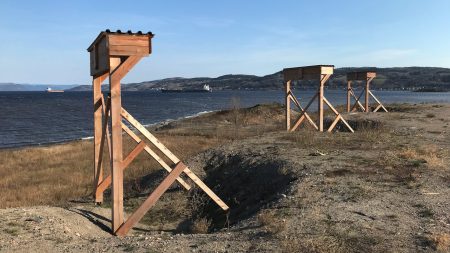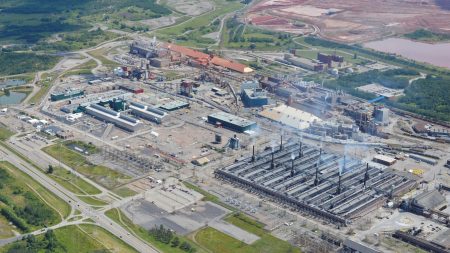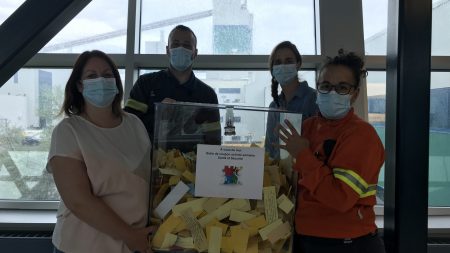Custom-made Nesting Boxes

Over time, the doors of shed number 8 at the port have become the summer home of a colony of cliff swallows. As La Baie port facilities modernisation project required the demolition of this shed, considerable efforts were made to relocate the colony before its return from migration.
In 2019 Rio Tinto collaborated with Jacques Ibarzabal, a professor at the University of Quebec at Chicoutimi, to relocate the birds to the site adjacent to the port facilities by recreating their shed habitat on custom-made nesting boxes with clay nests. Swallows of this species put a lot of energy into building their nests, and the complete reconstruction of the colony could diminish their chances of breeding.
Following the considerable efforts of the MQDA team tasked with modernising the wharves and alumina unloading system (referred to as the Modernisation des quais et du système de déchargement d’alumine project), port operation resources began another project with students from the responsible citizenship program at Grandes-Marées de La Baie high school. Two groups of students built additional clay nests to place in the nesting boxes. “It was a really great activity, and the students put a lot of effort into recreating the nests. We took the opportunity to show them the aluminium value chain video and give them more information about Rio Tinto’s operations in Saguenay–Lac-Saint-Jean,” said Mathieu St-Gelais, Assistant Manager, Port Facilities.
In addition to the construction of the nesting boxes, the doors that used to house the swallow nests were cut up and fixed on the new nesting boxes to recreate the previous habitat as closely as possible. The nests built by the students will be installed in these nesting boxes.
The new swallow colony was named the Grandes-Marées colony in honour of the students who contributed to the project. The students were able to visit the nesting boxes on 4 June and see the fruits of their efforts.
“It was really nice to do this with them and I was able to meet young people who are very involved and very concerned about the environment and sustainable development. They are very committed and have made a difference in carrying out this project. It is truly an example of success and collaboration between operations employees, project employees, and the community,” Mathieu St-Gelais concluded.


